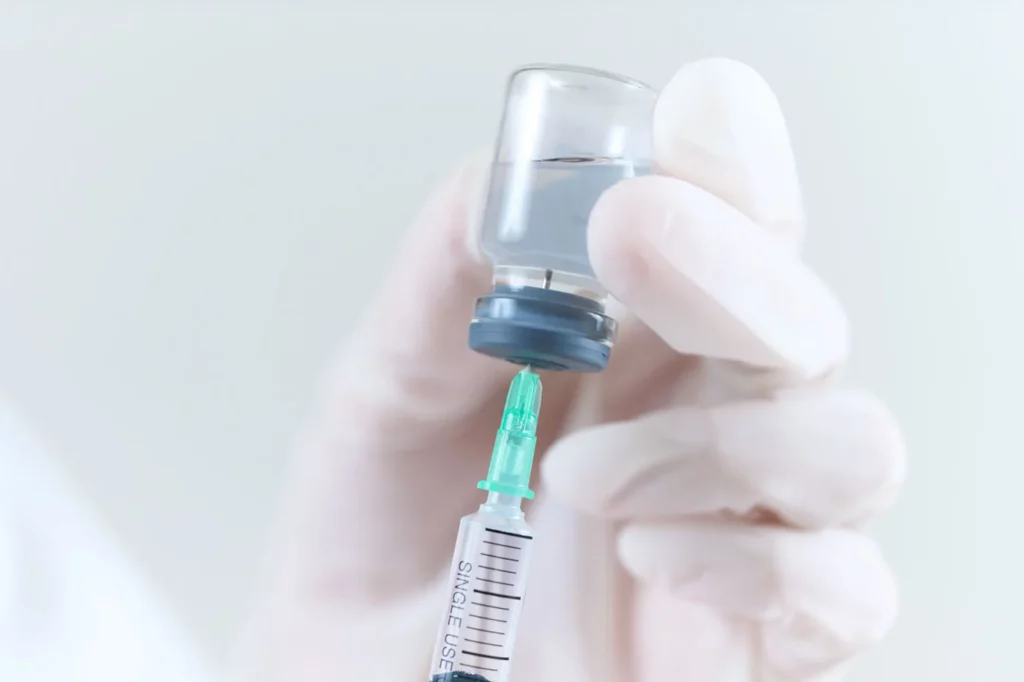Steroid Injections: Uses, Benefits, Side Effects, and Alternatives
Have you ever suffered from neck, back, shoulder, or knee pain? After reviewing imaging results or if physical therapy has not been effective, your general practitioner might recommend a steroid injection. In some cases, your surgeon may suggest a steroid injection as an alternative to surgery. This article addresses frequently asked questions about steroid injections.
What is a Steroid Injection?
Steroid injections are a common treatment used to reduce inflammation and relieve pain in various musculoskeletal conditions. They are frequently administered for conditions like arthritis, tendinitis, and bursitis. These injections deliver corticosteroids directly into the affected area, providing targeted relief.
Why Are Steroid Injections Needed?
Steroid injections are mainly used to:
- Reduce Inflammation: Corticosteroids have strong anti-inflammatory properties that help control inflammation in joints, tendons, and muscles.
- Relieve Pain: By reducing inflammation, steroid injections can alleviate pain associated with chronic conditions like arthritis, allowing patients to regain mobility and comfort.
- Improve Mobility: Targeting painful, inflamed areas, steroid injections can improve the range of motion in affected joints, enhancing quality of life.
- Delay Surgery: For some patients, steroid injections may delay or even prevent the need for surgery, particularly in cases where inflammation is well-managed.
Who Can Perform Steroid Injections in Australia?
In Australia, qualified healthcare professionals with specialized training may administer steroid injections. These include:
- General Practitioners (GPs): Many GPs with additional training can perform basic steroid injections for joint or soft tissue conditions.
- Specialists: Orthopedic surgeons, rheumatologists, and sports medicine doctors often include steroid injections as part of their treatment plans.
- Radiologists: For deeper or more complex injections, such as those around the spine, radiologists may use ultrasound or fluoroscopic guidance to ensure accurate placement.
- Physiotherapists: Some physiotherapists, particularly those with advanced training and specific qualifications, may perform these injections under regulatory guidelines.
In certain cases, anesthetists may administer steroid injections, especially for precise pain management, such as spine injections.
How Are Steroid Injections Given?
Steroid injections are typically administered directly into the joint, tendon sheath, or muscle where inflammation is present. The procedure usually involves the following steps:
- Preparation: The area is sterilized to prevent infection. A local anesthetic may be applied to minimize discomfort.
- Guidance (if necessary): For complex injections, especially near the spine, ultrasound or fluoroscopy may be used to guide the needle precisely.
- Injection: The corticosteroid is injected, often with a local anesthetic for immediate pain relief.
- Aftercare: Patients are typically advised to avoid strenuous activities for a few days to allow the medication to take full effect.
What Are the Advantages of Steroid Injections?
- Targeted Relief: Unlike oral medications that affect the entire body, steroid injections offer localized relief focused on the affected area.
- Rapid Onset: Many patients experience pain relief within 24–48 hours after the injection, with effects lasting from several weeks to months, depending on the condition and individual response.
- Minimally Invasive: Compared to surgical options, steroid injections are less invasive, with fewer risks and a shorter recovery time.
- Reduced Dependence on Oral Medication: For those with chronic pain, steroid injections can decrease the need for oral pain relievers, which may carry systemic side effects over time.
How Frequently Can You Receive These Injections?
For many conditions, steroid injections are limited to three to four times per year in the same area to prevent potential complications associated with overuse. This interval helps maintain effectiveness while reducing the risk of side effects.
What Are the Potential Side Effects of Steroid Injections?
While generally safe under medical supervision, steroid injections may have potential side effects, especially with frequent use. Common side effects include:
- Pain and Swelling: Some patients experience a temporary “post-injection flare” with pain or swelling at the injection site.
- Skin and Soft Tissue Changes: Repeated injections can lead to skin thinning, pigment loss, or even muscle weakness near the injection site.
- Joint Infection: Though rare, infection is a risk with any injection, making sterile technique essential.
- Elevated Blood Sugar: Corticosteroids can temporarily raise blood glucose levels, important for patients with diabetes.
- Weakened Tendons or Ligaments: Frequent injections may weaken tendons over time, potentially increasing rupture risk.
- Bone Weakening: Repeated injections in the same location can cause localized osteoporosis or osteopenia, increasing fracture risk with minimal force.
Can Steroid Injections Cure the Underlying Condition?
Steroid injections are primarily a symptomatic treatment rather than a cure. They provide relief by reducing inflammation and pain but do not address the root causes of chronic conditions like arthritis or tendinitis. While they can improve mobility and quality of life, the underlying disease may continue to progress. Patients often combine steroid injections with physical therapy or lifestyle changes for more effective management.
Should Patients Try Conservative Treatments Like Chiropractic Care Before Steroid Injections?
Conservative treatments, such as chiropractic care, physiotherapy, and lifestyle modifications, are often recommended before resorting to steroid injections. These options can be beneficial, especially when strengthening and improving joint function can alleviate symptoms without medication.
For example, chiropractic care can help restore joint mobility, reduce muscle tension, and support spinal health, potentially reducing the frequency or necessity of steroid injections. Patients are encouraged to explore non-invasive treatments first, reserving steroid injections for cases where conservative approaches have not provided sufficient relief.
Conclusion
Steroid injections can be highly effective for managing pain and inflammation, but they should be part of a broader treatment plan. Conservative treatments are generally recommended before considering steroid injections. For those seeking quick pain relief, combining injections with physical therapy, lifestyle adjustments, and other supportive care can help maximize benefits while minimizing potential risks. Consulting a healthcare provider is essential to determine the suitability, frequency, and safety of steroid injections for each case.


Pingback: De Quervain’s Tenosynovitis: Symptoms and Treatment